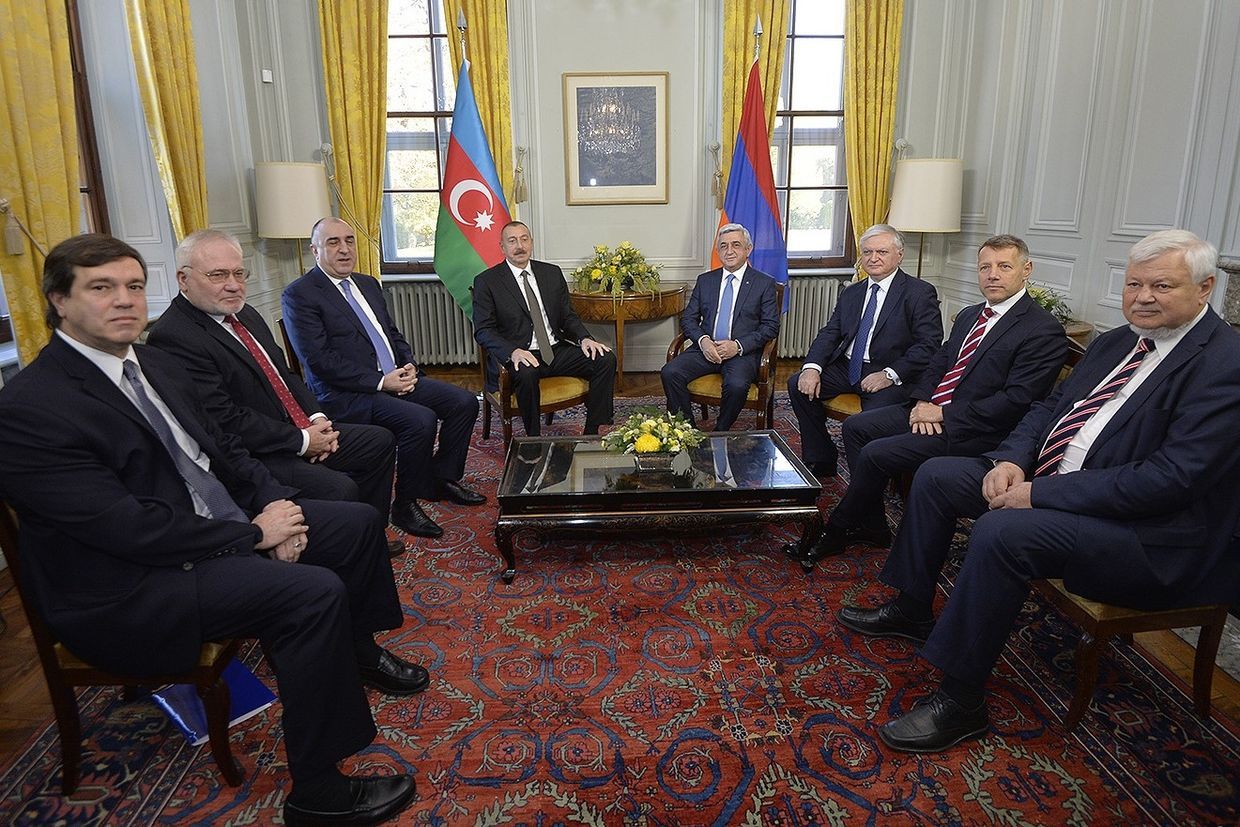
Azerbaijan has begun demolishing the Nagorno-Karabakh Foreign Ministry in Stepanakert. The demolition began on the anniversary of Nagorno-Karabakh’s declaration of independence.
The demolition of the former Foreign Ministry’s building began on Tuesday, according to the Azerbaijani state media outlet Azertac.
Their article highlighted the ‘symbolic significance’ of the date the demolition began: the anniversary of Nagorno-Karabakh’s declaration of independence.
‘Even [former Foreign Minister Davit] Babayan and others, who are accused of war crimes and are currently on trial in Baku, were sitting in this building and stating that the Azerbaijani flag could only be flown in Karabakh under one circumstance, and that could be the opening of [an Azerbaijani] embassy [in Stepanakert]’.
‘Therefore, the fact that the demolition of this building began on September 2nd has great political and symbolic significance’, Azertac wrote.
The article then discussed Azerbaijan’s reconstruction of the city, which is understood to be largely deserted after the mass exodus of its Armenian population following Azerbaijan’s final assault on the region in September 2023.
Azertac wrote that the demolition of the building came as part of the ‘reconstruction’ efforts, claiming that the building was ‘completely awkward and contrary to the city’s architecture’, and that its demolition was ‘a serious necessity within the framework of the urban planning policy and the process of beautification of the city’.
In its place, Azerbaijan intends to build a ‘new three-story administrative building’ for the Regional Architecture and Urban Planning Department, to be commissioned in early 2027.
Since its takeover of the region, Azerbaijan has been accused of demolishing or damaging buildings and Armenian cultural heritage in Nagorno-Karabakh, amidst an apparent push for Azerbaijani ‘resettlement’ in the region
In March 2024, Azerbaijani Telegram channels published images appearing to show the demolition of the former building of the Parliament of Nagorno-Karabakh in Stepanakert.
In March 2025, an Azerbaijani politician who took part in a tour of Nagorno-Karabakh conducted by the authorities of Azerbaijan, told OC Media that Karabakh University, formerly known as Artsakh University, currently teaches ‘almost 1,500 students’ and has 300 teachers. Karabakh University was officially registered in late November 2023.
Monument Watch, an Armenian academic platform focused on cultural heritage in Nagorno-Karabakh, called the appropriation of the university building ‘another stage of the programmatic policy of the elimination of the Armenian trace of Azerbaijan’.
Nagorno-Karabakh a ‘noose around Armenia’s neck’
On Tuesday, Nagorno-Karabakh’s Parliament in-exile issued a statement commemorating the declaration of independence.
‘This date is not only a historically significant day for the Armenian people, but also a testament — grounded in international law — to the right to self-determination and to live in peace. This decision of pan-Armenian importance rested on firm historical and legal foundations’, they said.
‘The 2020 war, followed by the genocidal actions of Azerbaijan in September 2023 — the complete occupation and depopulation of Artsakh — entered the annals of humanity as a dark and disgraceful page, where the right to self-determination and to live freely was sacrificed to brute force, economic interests, and totalitarian ambitions’.
They stressed that Armenian national, cultural, and religious heritage needed to be preserved and protected, and that the collective return of Armenians to Nagorno-Karabakh is an ‘inalienable and absolute right’.
‘Its denial constitutes a continuation of the genocide committed by Azerbaijan’.
The parliament has also criticised the dissolution of the OSCE Minsk Group the day prior, ‘without the creation of mechanisms and guarantees’ for protecting the rights of Nagorno-Karabakh Armenians.
They additionally demanded that Yerevan call upon international organisations to place the release of Armenian prisoners standing trial in Azerbaijan.
Samvel Shahramanyan, Nagorno-Karabakh’s president, who was elected by parliament following Azerbaijan’s assault on the region, delivered a speech at the opening ceremony of a memorial dedicated to Nagorno-Karabakh at the Yerablur military cemetery in Yerevan on the same day.
‘Unfortunately, we have found ourselves in a harsh reality. The reality is that Artsakh is considered a “noose” around the “neck” of the Republic of Armenia, from which it was necessary to get rid of so that they get the opportunity to preserve the independence, sovereignty of Armenia’, he said, according to News.am.

For ease of reading, we choose not to use qualifiers such as ‘de facto’, ‘unrecognised’, or ‘partially recognised’ when discussing institutions or political positions within Abkhazia, Nagorno-Karabakh, and South Ossetia. This does not imply a position on their status.











